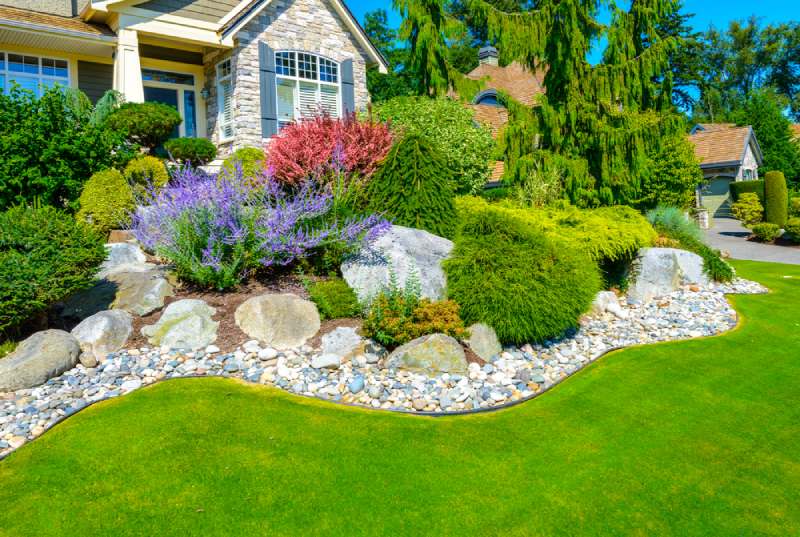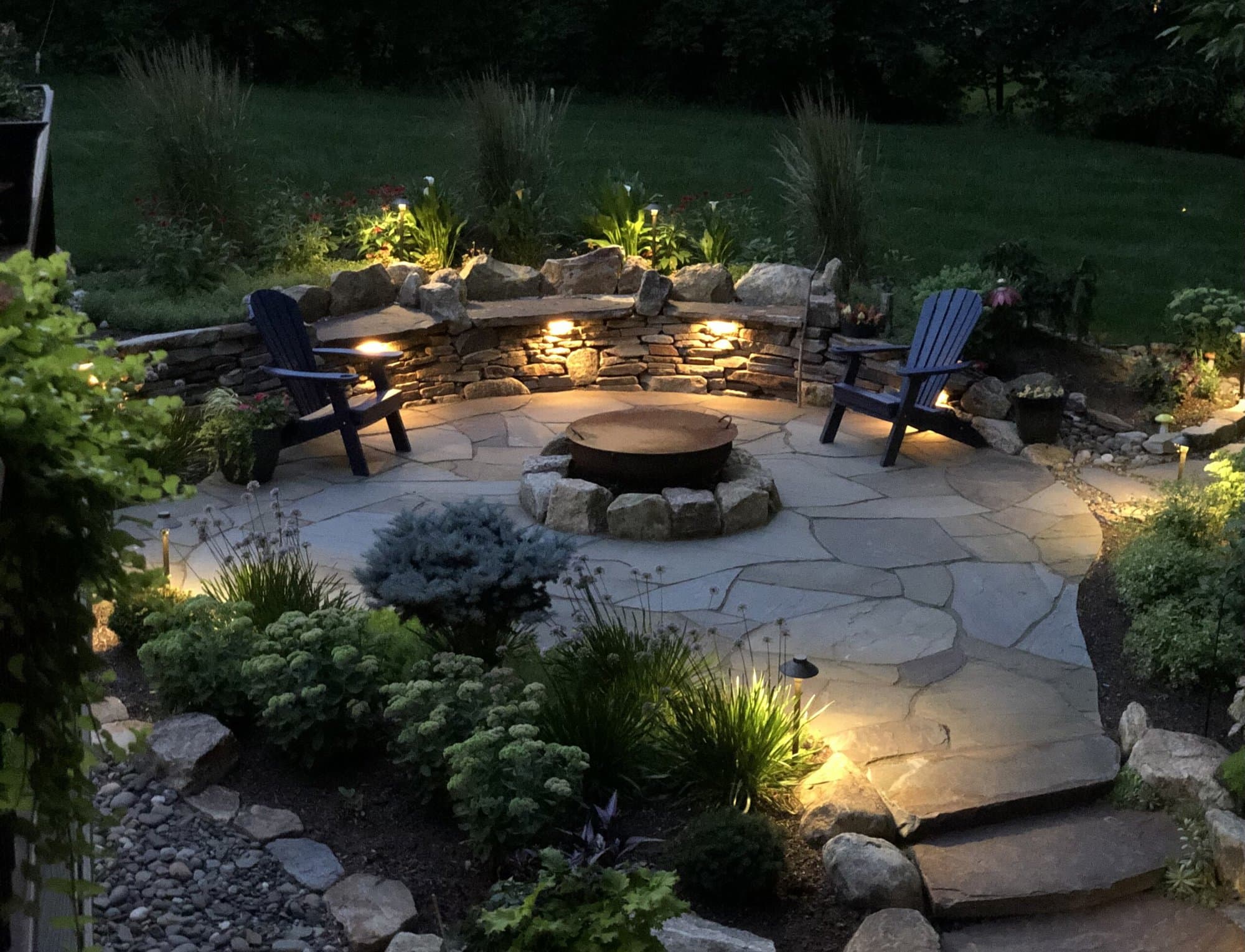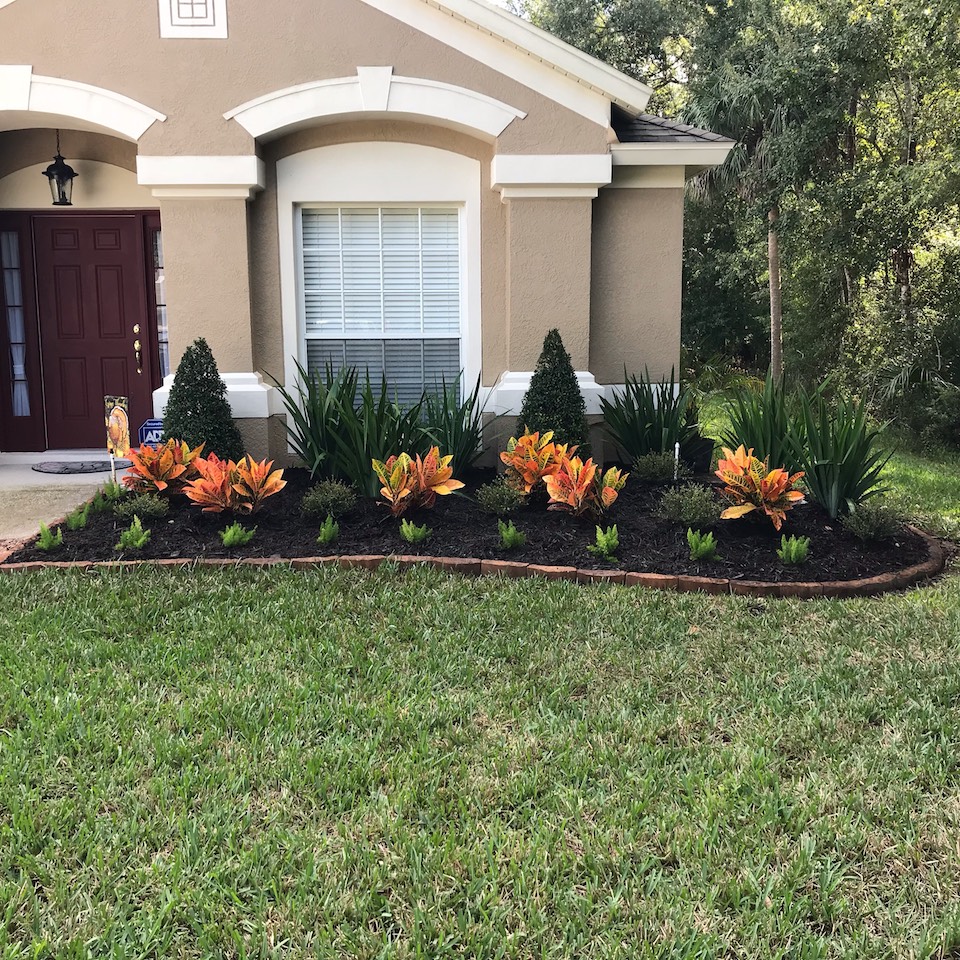A Comprehensive Guide to Designing and Implementing Effective Landscape Design Solutions
The art and science of landscaping prolong beyond plain visual appeals; they entail a thoughtful assimilation of layout concepts, environmental stewardship, and practical execution. What techniques can one utilize to make sure these landscapes not only grow yet likewise grow in consistency with their surroundings?

Comprehending Landscape Design Concepts
One may question what fundamental elements add to efficient landscape layout. At its core, successful landscape design rests on several crucial principles that lead the plan and option of aspects within a space. These principles consist of unity, balance, percentage, and rhythm, each serving to develop a harmonious outside environment.
Unity describes the cohesive partnership among different components, making sure that they collaborate cosmetically and functionally. Balance can be accomplished via symmetrical or asymmetrical plans, permitting the landscape to feel steady and welcoming. Percentage involves comprehending the range of components in connection with each various other and the surrounding setting, promoting visual harmony and convenience.

Assessing Your Outdoor Area
Prior to implementing the principles of landscape layout, an extensive assessment of your outside room is vital. This initial examination aids specify the scope of your landscaping job and makes certain that your layout aligns with the distinct attributes of your property. Begin by evaluating the dimensions of your area, taking exact dimensions to recognize the readily available location for various elements such as patio areas, paths, and yards.
Next, observe the existing attributes of your landscape, including topography, dirt quality, and drain patterns. These elements significantly affect plant choice and placement. Additionally, evaluate the sunshine direct exposure throughout various locations throughout the day, as this will affect the kinds of plants that thrive in your yard.
Consider the microclimates produced by frameworks, trees, and various other barriers, as they can influence temperature and moisture degrees. Take note of any kind of existing plants or hardscape aspects that you wish to preserve or eliminate. This extensive assessment lays the foundation for a reliable and knowledgeable landscaping remedy, making sure that your design is not just aesthetically pleasing yet lasting and likewise useful for many years ahead.
Sustainable Landscape Design Methods
These methods not just advertise ecological equilibrium but additionally enhance the aesthetic and practical worth of a landscape. Implementing effective irrigation systems, such as drip watering, lessens water waste and ensures that plants receive sufficient wetness (Palm Desert Landscaping).

Another efficient technique is the calculated placement of shrubs and trees to resource give all-natural windbreaks and shade, hence decreasing energy prices (Palm Desert Landscaping). Rain yards can be incorporated into the landscape layout to handle stormwater drainage efficiently, filtering system pollutants prior to they enter waterways
Picking the Right Plant Kingdoms
Selecting the right plants for your landscape is essential to accomplishing both aesthetic allure and eco-friendly consistency. The process begins with an understanding of your neighborhood environment, dirt conditions, and the certain microenvironments within your landscape. Assessing elements such as sunshine direct exposure, dampness degrees, and existing vegetations will certainly help you choose plants that flourish in your special setting.
Think about including native plants, as they are well-adapted to neighborhood conditions, require less upkeep, and assistance local wild animals. Additionally, selecting Visit Your URL a varied array of species can boost biodiversity while lowering the threat of condition and bug break outs. It is vital to review the development routines, flowering periods, and seasonal shades of possible plants to produce a vibrant and natural landscape.
Additionally, think about the planned use of the space; for instance, if the location will experience high foot traffic, decide for durable ground covers. By thoughtfully picking plants that line up with both your aesthetic objectives and ecological needs, you can produce a sustainable landscape that not just improves your residential property however also adds positively to the bordering environment.

Implementation and Maintenance Methods
As soon as the right plants have been selected for your landscape, the emphasis shifts to efficient execution and recurring maintenance methods. Effective installment starts with proper site prep work, which consists of dirt testing to identify nutrient degrees and pH, adhered to by modifying the soil as needed. Very carefully prepare plants according to their growth habits and light requirements, guaranteeing ample spacing to advertise healthy growth.
Irrigation is an essential element of implementation. Establish a watering schedule that considers the specific needs of each plant species, adjusting for seasonal changes. Utilizing drip watering systems can boost water performance and lower drainage.
Upkeep techniques need to be carried out to make sure the durability and vitality of your landscape. Regular tasks consist of weeding, mulching, and trimming to manage growth and prevent disease. Fertilizing must be carried out based on dirt examinations, supplying the required nutrients without over-fertilizing.
Keeping an eye on for bugs and illness is crucial; early discovery can avoid significant damages. Seasonal changes to upkeep routines, such as preparing and winterizing perennials for spring development, will make certain that your landscape stays aesthetically appealing and healthy and balanced year-round.
Final Thought
Effective implementation and continuous maintenance better make sure the long life and vitality of landscapes. By integrating these elements, landscapes can be transformed into beautiful, practical settings that advertise biodiversity and contribute positively to neighborhood health.
One could wonder what fundamental components add to efficient landscape style. At its core, successful landscape style pivots on numerous key principles that lead the setup and option of aspects within a room.Selecting the right plants for your landscape is critical to attaining both visual charm and ecological harmony. It is crucial to evaluate the development practices, blooming durations, and seasonal colors of potential plants to develop a dynamic and explanation natural landscape.
Once the right plants have actually been chosen for your landscape, the emphasis shifts to effective implementation and recurring upkeep methods.